| The Bay of Fundy is famous for having the highest
tides in the world. Part of the reason is the shape of the bay. Truro is
almost at the head of the bay and is famous for its 'bore'. As with the
Severn bore in England, the water comes up the river completely reversing
the flow approximately one hour before high tide. | 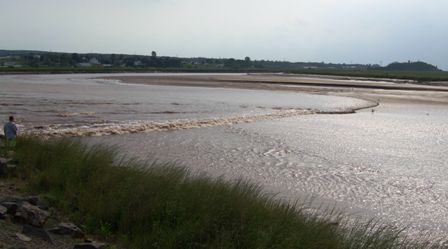 |
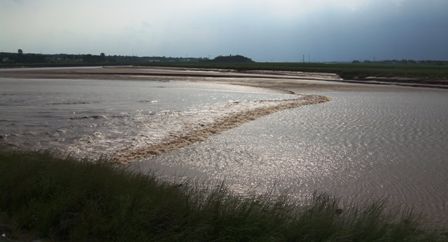 |
The bore can range from a few inches to over a foot depending on the weather
and the phase of the moon. The river is quite shallow here and as the water
comes round the curve it floods the mud flats where the seabirds have been
only moments before. This reduces the height of the wave as it spreads over
the width of the river flooding the shallower sides. |
| The water behind the wave can be quite turbulent as
the water bounces off the banks. Further downstream you can take a tour out
in an inflatable and 'surf' the wave. | 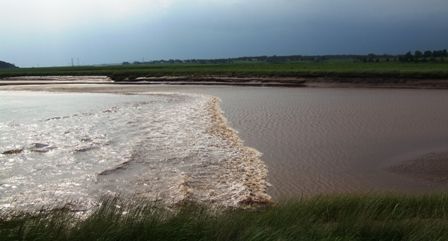 |
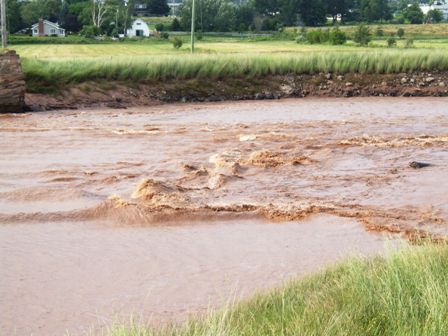 |
As the river narrows where there used to be a bridge the surge height
increases and the following turbulence is more intense. The whole event is
over in a couple of minutes but dozens of tourists and locals were there to
watch. |
| The following day we moved on and the river was at low
tide, wide and mainly mud flats. | 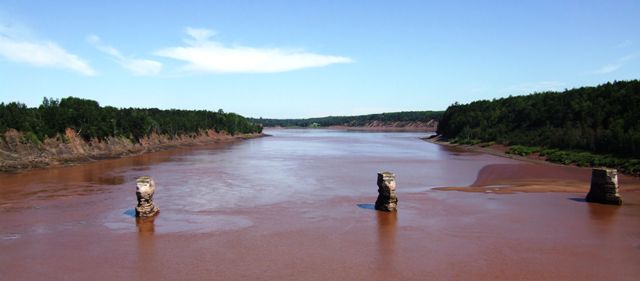 |
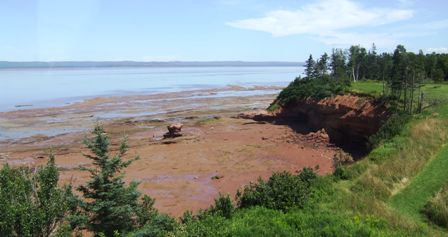 |
We went up to Burncoat Head on the Bay of Fundy itself. At this point, the
highest tide ever recorded was 54 FEET. |
| It seems a little hard to believe at the head of a bay
which should have been quite sheltered. However you can see where the waves
had eroded the sandstone cliffs. The bay is 250 miles long and up to 75 feet
deep. The water rises over an inch a minute when the tide is coming in.
During each tide 100-150 cubic KILOMETRES of water enter the bay from the
ocean. | 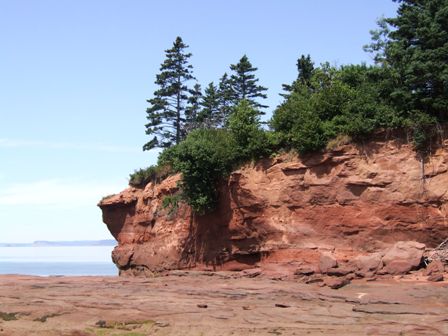 |
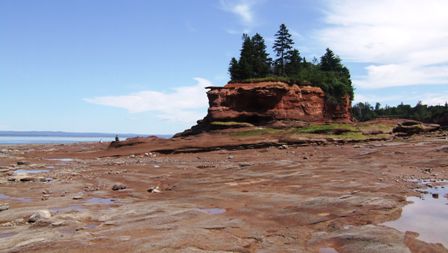 |
We wandered around the rock pools and watched a bald eagle but somehow never
got close enough to get a useable photo. Perhaps that is how it should be. |
| He is out there at the water's edge, visible by
binoculars but now only a pixel high. This will all be covered at high tide. | 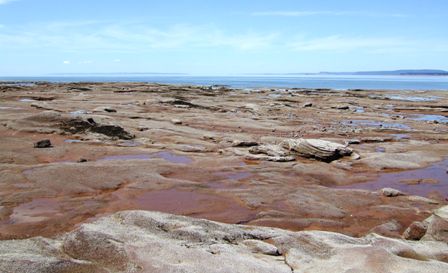 |
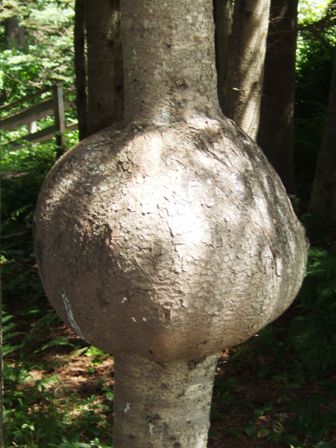 |
Back through the woods we spotted this gall on a tree. They are not uncommon
but I don't know what causes them. |
| A last view over the bay with New Brunswick in the
distance. We headed east for the other coast of Nova Scotia and the sailing
centre of Lunenburg. | 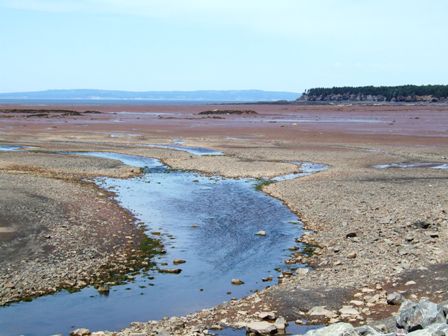 |
|